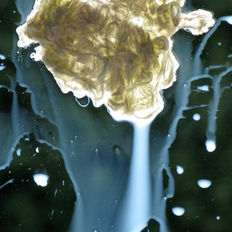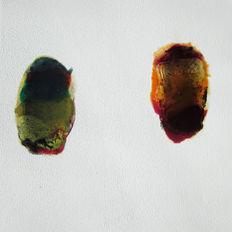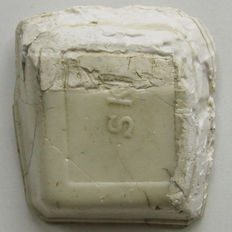
Heading 1
展クライスト チャーチxセンダイ恊働企画
Exchange Part One: Sendai, Japan
The Christchurch/Sendai Art Exchange was established in 2012 to celebrate the resourcefulness and resilience of artists living in the earthquake-struck cities of Christchurch, New Zealand, and Sendai, Japan. The origins of the Shared Lines name comes from both the countries’ locations on the Pacific Ring of Fire, and the physical cracks that are now a part of these cities’ urban landscapes. While not every work featured is directly focused on earthquakes or tsunami, they share something unspoken in being created in these post-disaster environments. With these works, language and cultural barriers are bridged by the language of art, and we can share our grief, our struggles, and our hope for the future.
In June 2012 the work of 34 contemporary Christchurch artists was exhibited in Sendai, and then the coastal village of Shiogama in the first stage of the exchange. Next, a group of Sendai artists were represented in a return exhibition shown at the Canterbury Museum. Running concurrently at the Ilam School of Fine Arts Gallery at the University of Canterbury was Shake it Up, an exhibition which showcased a broad range of contemporary artwork from both Christchurch and Sendai.
It is the ongoing aim of the project to give established and emerging artists from each country the chance to exhibit on an international stage, and to present our communities with a unique opportunity to see the best in contemporary art that each city has to offer.
Gareth Talbot, 2013
仙台クライストチャーチ芸術交流協会は、被災地で意欲的に創作活動するアーティストの表現の場を広げる目的で
2012年に宮城県仙台市とニュージーランドのクライストチャーチ市によって創設されました。恊働企画「Shared Lines (共有する断層)」は、両国の属す環太平洋火山帯と街中に残る断層跡の風景にちなんで名付けられました。
すべての展示作品が直接津波や地震に焦点をあてているわけではありませんが、同じく震災を体験した両市在住のアーティストは、言葉では表現できない何かを共有しています。これらの作品を通して、言葉と文化の壁は「芸術」という言語によって結ばれ、人々の悲しみや苦悩、そして将来への希望を分かち合うものとなります。
2012年6月、交流の第一弾として、クライストチャーチから現代アーティスト34名の作品が宮城県仙台市で展示され、その後、同県塩竈市の海村でも展示会が開催されました。そして現在、仙台在住のアーティストがクライストチャーチ市で第二弾の展示会を開催しています。このプロジェクトは著名なアーティストだけでなく若手のアーティストにも国際的な舞台で展示をする機会を与え、更には両市の市民に良質な現代アートを鑑賞する機会を提供することも目的としています。
同時に開催されているカンタベリー大学のイラム • ファインアーツ•ギャラリー「Shake it Up (シェィク•イト•アップ)展」には仙台市とクライストチャーチ市から様々な現代アートの作品が展示されています。
この企画についてはオンラインでもご覧頂けます。
2012 Christchurch Artists
Exchange Part 2: Christchurch, New Zealand
Although the aftermath of the Christchurch earthquake pales into insignificance when compared with events in Northern Japan, we can, however, note that in best of times, in capitalist societies, the arts are frequently pushed to the margins. In a natural disaster the arts community is among the most vulnerable, but being by nature entrepreneurial and adaptable, the arts are among the first things to spring back to kick-start the healing process. Shared Lines: Christchurch/Sendai Art Exchange is part of that for two cities which have both suffered greatly the wrath of unpredictable nature. We watch and wait as the brain of the city tries to reconnect around the damage of an unexpected aneurism.
The bringing of art from Christchurch to Sendai is a symbolic act of solidarity, sympathy and understanding from one seismically-scarred community to another. The various artworks take their inspiration from individual earthquake experiences, though sometimes tangentially. Brooke Georgia’s No and Know (2011), for example, references the floor plan of her ruined home and studio. Tim Middleton’s plaster cast of a baby’s shoe (2012) suggests abandonment, and perhaps recalls some of the smaller and sadder fatalities of September 2010 and February 2011 Christchurch events. Marie le Lievre’s Barbiturate painting is a joking allusion to the prevalence of mood medications in the city following the disaster.
Although Miranda Parkes’ sculptural painting Splitter was made in 2008, its form suggests the tectonic plates moving far beneath the ocean. The works of Cristina Silaghi, Gaby Montejo, Mirabel Oliver, and Adrienne Milwood all suggest a sense of fractured landscape and chaotic interior, or the ephemerality and fleeting nature of material possessions and stability. Kim Lowe’s print incorporates a Maori motif, a reference to her children’s cultural inheritance that also hints at the concept of stewardship held sacred by the indigenous people of New Zealand and suggested grace notes of nature. Nature at its most exquisite nature also appears in Rebecca Smallridge’s work. Matt Akehurst’s biomorphic abstract sculptures seem to cry out in existential terror.
This is just a brief sampling of the works by the thirty artists in this exhibition – a project of considerable size and aesthetic heft. The artists represented reflect the closeness of Christchurch’s artistic community, its loyalty to the broken city, and its resilience. Christchurch’s art scene is one of the longest established in New Zealand, closely associated with the University of Canterbury School of Fine Arts, the oldest art school in the British Commonwealth outside of the United Kingdom. It is a vibrant community that shares and exchanges ideas constantly. Most of New Zealand’s preeminent artists have close connections to the city and its institutions. This exhibition represents the broadest representation of cultural practice in Christchurch, from celebrated practitioners to the not so well known.
Each work, appropriate for people who have lost so much, is whatever can be carried and easily transported in ordinary luggage; fragments of an art scene from a city where the cultural heritage is also reduced to fragments. The Sendai/Christchurch exchange is an acknowledgement of our shared geographical relationship with the Pacific Ring of Fire, and our desire to express empathy through a shared and universal language of art. This is cultural achievement in post-tragedy environments bridging 9611.7 Kilometres of Pacific Ocean in a very genuine and heartfelt project. Christchurch will likewise be honoured to receive a reciprocal exhibition of work by Japanese artists the following year.
In times of trial and tribulation, the artists of the world should draw strength from each other.
Andrew Paul Wood, 2012
クライストチャーチ地震の被害は、2011年3月11日の東日本大震災と比べ、あまり注目されていませんが、この資本主義社会という良き時代において、アートという存在は、最もダメージを受けやすく、時に隅に追いやられてしまうものであることを気づかせてくれました。しかしながら、芸術が持つ起業家的精神や順応する力によって、いち早く復活し未来に向かって立ち直る弾みであるとも言えます。
クライストチャーチ×センダイ恊働企画「Shared Lines」展は、自然災害により大きな被害に遭ったニュージーランド・クライストチャーチと宮城県仙台市のアート交流の一環として開催されます。予期せぬ自然災害によって被害を被った街が、今後どのように復興していくのか見届けていきます。
クライストチャーチからの作品は、地震によって引き裂かれた互いのコミュニティーの結束・共感・理解のシンボルです。すべての作品ではありませんが、多くの作品は個々のアーティストが震災で感じた事を表現しています。
ブロック・ジョージアーの“No and Know(2011)”は、地震で被害を受けた自身の家やスタジオの図を参考に描いています。ティム・ミドルトンの“plaster cast of child’s shoe(2012)”では放棄、おそらく2010年9月と2011年2月のクライストチャーチ地震で亡くなった幼い子供達への思いを表現しています。マリー・リリーブの”Barbiturate”の絵は、震災後に精神安定剤を服用する人が増えた事を冗談めかして表現しています。
ミランダ・パークスの作品“Splitter”は、2008年の作品で、海底で動くプレートを表現しています。また、クリスティーナ・シラヒ、ガビ・モンテーホ、ミラベル・オリバー、アドリエン・ミルウッドは、崩壊した景観や雑然とした室内、命、物質的な財産そして安定というものの儚さを作品を通して問いかけています。キム・ロウの絵は、マオリのモチーフが取り入れられ、彼女の作品は、自身の子ども達が受け継いでいるマオリ文化を表現すると共に、ニュージーランドの原住民達が大切に守ってきた自然に対する畏敬の念を伺わせています。自然の繊細さを最も美しく描写している作品は、レベッカ・スモールリッジの作品です。マット・エイクハーストの生物の形を模した抽象的な彫刻は、自身が体験した恐怖に叫び声を上げているかのようです。
この展覧会には30名以上のアーティストが出展しており、ここで紹介するのはごく一部です。
アーティスト達は自らの作品に、クライストチャーチのアーティストコミュニティーとの関わりの深さ、傷ついた街に対する愛情、そして再生する力などを映し出しています。クライストチャーチのアートシーンは、英国外の英連邦の中で最も古いカンタベリー大学美術学部と密接に関わっており、ニュージーランドで最も歴史があります。意見交換や情報共有を定期的に行うなど、活動を活発に行なっており、ニュージーランドで活気あるコミュニティーといえるでしょう。著名なアーティスト達は、クライストチャーチ市役所や関係機関と深い繋がりがあります。この展覧会には、有名無名に関係なく様々なアーティストが参加しており、幅広いクライストチャーチの文化活動を物語っています。
それぞれの作品は、多くを失った人々にとっても、鞄ひとつで簡単にどこにでも持ち運び出来る大きさになっており、震災によって傷つけられた文化遺産があるクライストチャーチのアートシーンの破片です。この仙台・クライストチャーチ恊働企画展は、環太平洋火山帯という地理的な繋がりを確認し、アートという世界共通言語を通して、共感する気持ちを表現したいという強い思いで実現しました。この心温まる文化交流が、太平洋を挟んで9611.7キロ離れたクライストチャーチと仙台をつなぐ、架け橋となれば幸いです。そして来年はクライストチャーチで、日本のアーティストたちの展覧会を開催できることを喜ばしく思っております。
このような試練の時こそ、世界中のアーティストがその強さを互いに引き出し合うべきなのです。
アンドリュー ポール ウッド
2012 Sendai Artists
The exchange can also be followed online via www.sendai-christchurch.tumblr.com
The production of this site/resource was sponsored by NZJEP







































